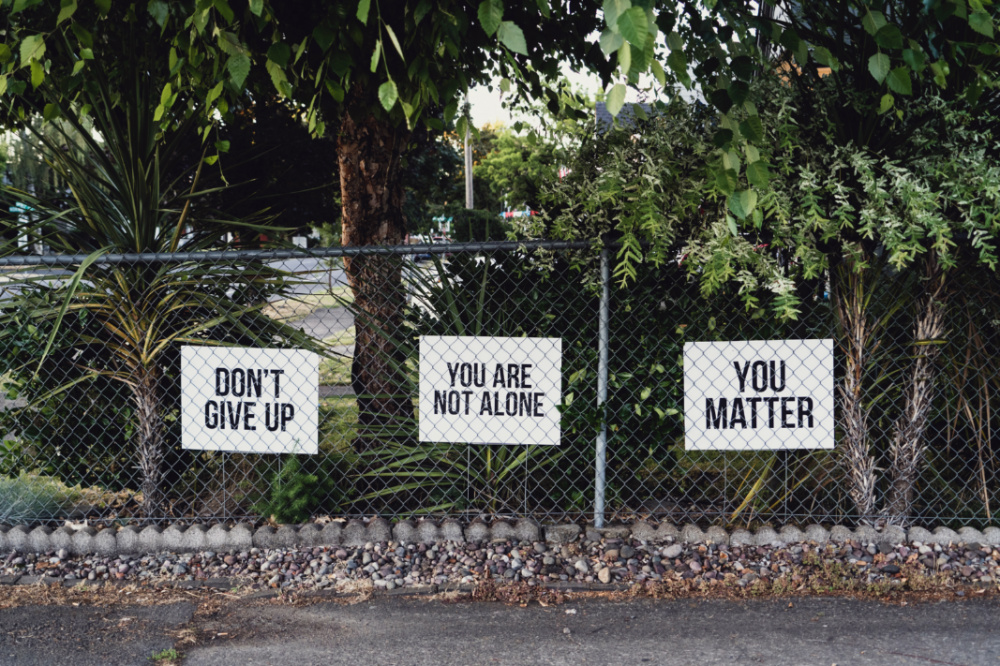
GLEN BLOOMSTROM, director of US-based Faith Community Engagement for LivingWorks Education – a suicide intervention training company, writes, in an article first published on Religion News Service, about the importance of “natural helpers” in suicide prevention…
A recent US Centers for Disease Control report indicated that one-quarter of young adults between the ages of 18 and 24 say they’ve considered suicide in the past month because of the pandemic. Think about that. You walk by a group of four young people and one of them has considered suicide in the last four weeks. Staggering.
Other studies add to these grim findings. Veteran studies have noted that for every half-per cent gain in unemployment, there will be an increase of 500 more veteran deaths by suicide. Turning to agricultural communities, the situation pre-COVID-19 was already grim. Farm, ranch and agricultural communities already had suicide rates that were 3.5 per cent higher than comparable urban areas.

Signs of encouragement in Salem, Oregon. Photo by Dan Meyers/Unsplash/Creative Commons
Researchers are seemingly united in saying the data now points to an increase in deaths of despair. Crisis hotlines are seeing unusually high demand. Mental health and tele-health agencies have longer waiting lists.
How is it possible to meet the increasing wave of those who are living with despair? Two words: natural helpers.
“Society frequently overlooks these natural helper resources, insisting instead that only professionals can help. Oddly, for both professionals and natural helpers, a variety of fears keep them from asking about suicide. Training and collaboration can allay these fears and build confidence to help those with thoughts of suicide.”
Historically, natural networks such as churches and faith communities have been a cornerstone of the community social structure. Equally significant are the web of family, friends, elders, faith leaders, teachers and coaches. These are all natural helpers. It is part of human nature to want to help.
So what holds us back?
Society frequently overlooks these natural helper resources, insisting instead that only professionals can help. Oddly, for both professionals and natural helpers, a variety of fears keep them from asking about suicide.
Training and collaboration can allay these fears and build confidence to help those with thoughts of suicide. Family, friends, colleagues and teachers in work settings all know their people far better and can identify changes that indicate that suicide may be involved. Lives will certainly be saved if more were trained.
Natural helper networks exist and are effective. Alcoholics Anonymous has 62,000 meetings in North America, none of them staffed by professionals. Celebrate Recovery, church-based recovery meetings, are in 25,000 locations. And this is where those who need the help often turn: Studies indicate that 25 per cent of people will consult a ministry leader before a mental health professional.
But other studies indicate that ministry leaders are insufficiently trained in suicide intervention, prevention and post-vention or care following suicide behaviours. Thirteen million mostly non-medical helpers learn CPR annually. Why not suicide intervention skills?
Training is available. There is excellent online suicide-intervention skill training for anyone, any time. Soon, specific online training will be available for ministry leaders to help sharpen suicide prevention, intervention and long-term care after suicide behaviors in various ministry settings. The training also encourages community collaboration and suicide prevention network building.
When I started out as a chaplain on active duty in the US Army decades ago, there was heavy stigma against any soldier who admitted he or she was struggling with suicidal thoughts; he or she was damaged goods, broken. Slowly this stigma is lessening, but it still exists in all avenues of society, including faith communities.
The good news is that both faith leaders and lay people, like everyone, possess human skills. When everyone has a base level of training, they are able to recognise someone in need and then, if necessary, connect them to professional help.
Let’s not wait until it is too late. Now is the time to prepare. Suicide prevention is everyone’s business. By getting training and tapping into the natural helper skillset that is inherent to all human beings, we’ll be able to walk by that group of young people and lend a hand to that one in four with thoughts of suicide.
If you are having suicidal thoughts, or you know someone who is, help is available. In the US, call the National Suicide Prevention Lifeline at 1-800-273-8255. You can also text with an emotional support counselor with the Crisis Text Line by texting HOME to 741741. In Australia, people looking for help or information can call Lifeline on 13 11 14 or the Suicide Call Back Service on 1300 659 467.
Glen Bloomstrom is the director of Faith Community Engagement for LivingWorks Education, a suicide intervention training company.






